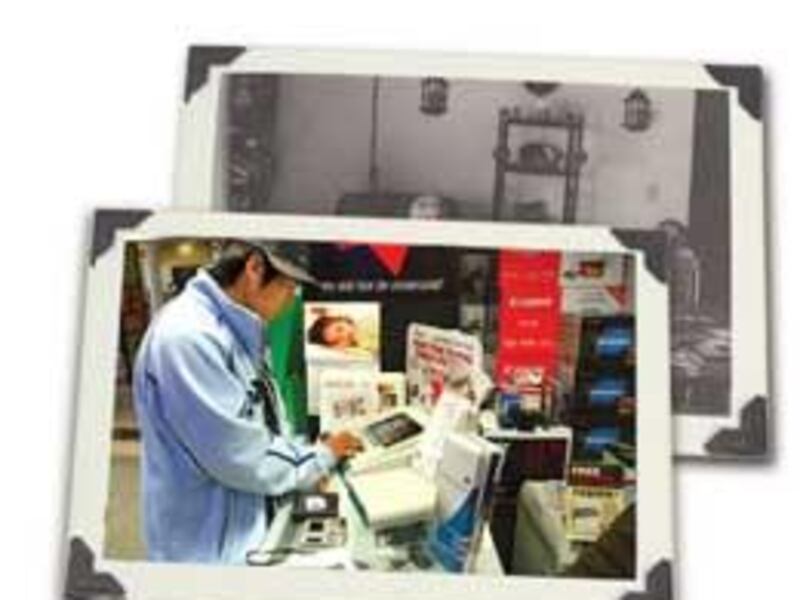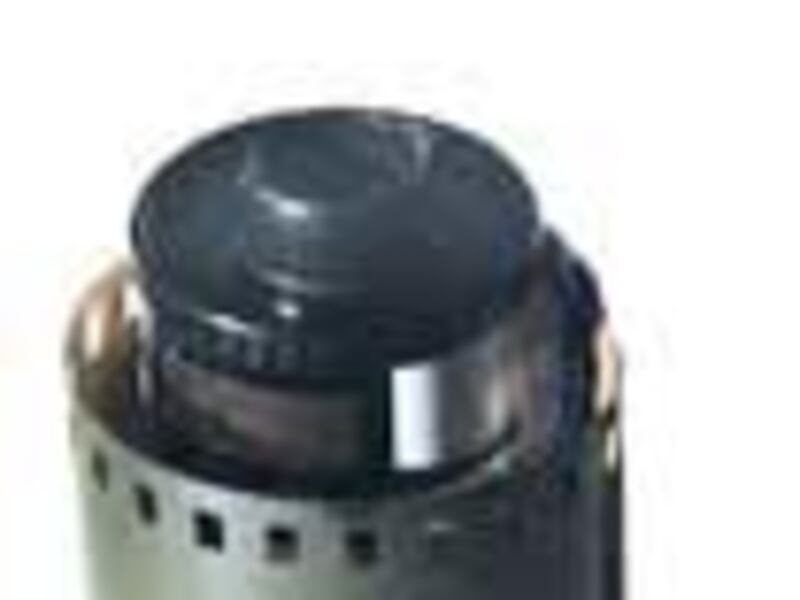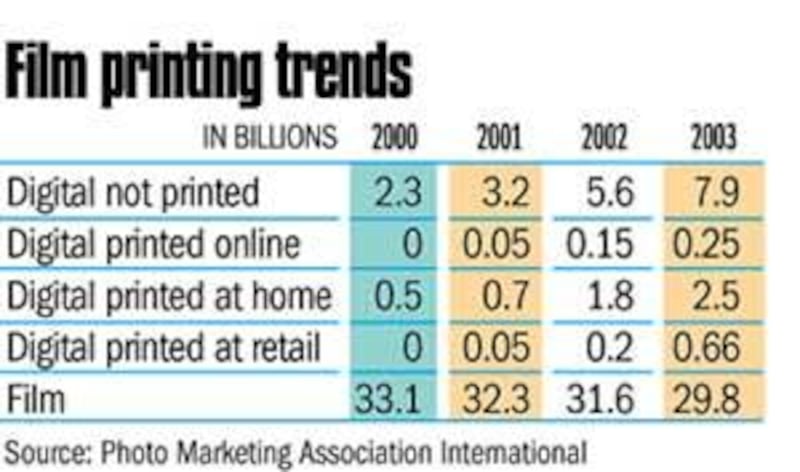Point-and-shoots can do it. Some camcorders can do it. Hey, even cell phones can do it.
Taking a digital photograph has come a long way in a short time, with consumers sliding away from film and capturing their Kodak moments on memory sticks and the like. But don't believe for a minute that people are no longer heading to the photo shop to get their pictures developed and processed.
Sure, people can make digital prints easily at home, but photo shop folks are far from being their industry's Maytag repairman, lonely and looking for something to do.
Photofinishers, it turns out, are far from finished. For them, consumers' move to a world without negatives actually has been a positive as they've found ways to serve a growing nation of digital shutterbugs.
"Eighty percent of our sales are digital cameras — maybe more — so obviously it's an up-and-coming thing," said Joe Kase, manager at Inkley's in downtown Salt Lake City's ZCMI Center. "We find, however, that most people don't want to print at home, and, if they do, they aren't happy with the results."
How long that will last is anyone's guess, but the photo industry is not expecting to ever see a photocopy of 2000, when film developing topped out. A poor economy hurt the industry the next year, but digital camera sales have contributed to a film decline since then.
By the end of last year, 21 percent of U.S. households owned a digital camera, and sales of digital cameras are expected to overtake film cameras this year, with each selling more than 12 million, according to the Photo Marketing Association International.
Massachusetts-based InfoTrends Research Group says 20 percent of U.S. households now own a digital camera and that digital camera penetration should reach 30 percent by year-end. InfoTrends is predicting that by 2008, sales of digital cameras will have nearly replaced sales of film cameras, not counting the single-use types. It believes digital camera unit sales will hit 14.3 million this year.
Digital shots (including those not printed or printed online, at home or at retail shops) totaled only 2.8 billion prints in 2000 but rose to 11.31 billion this year. Film use, meanwhile, has shrunk from 33.1 billion to 29.8 billion prints during that time.
"Regardless of the strength of the economic recovery, film sales numbers will never again reach the same level as their peak in 2000," the photo marketing association said.
While that snapshot of the industry may seem dire, photofinishers are, in a sense, a poster child for how to adjust to changing technology. They've stayed in the picture by offering digital camera buffs a place to get what they can't get at home: good, long-lasting images for less money.
"First of all, it's more expensive to do at home, by the time you count the paper and ink," Kase said, adding that prints cost 39 cents or less at the shop, compared to 70 cents for print-it-yourselfers. "And, secondly, they're not archival, although they are getting better."
PMAI sees the digital trend as a sort of photo opportunity. "As more of these consumers — mostly women and families with young children — begin to use digital cameras, they will require greater service from photographic retailers for pursuing printing options and finding the right accessories," it said in a trend report this year.
"For us, digital has been wonderful," said Kirk Green, president of Ferrari Color, formerly Creative Color Services, in Salt Lake City. "Some thought it was a passing fad, but we love it."
Some customers have barely mastered the art of taking photos, let alone making prints at home. Green said some people don't even know how to remove their memory cards from the camera.
High-end amateurs and professionals often take a few digital pictures, print them at home and are disappointed with the print quality, the costs of materials and the time it takes to get the finished product.
"We still process quite a bit of film," he said. "Mostly on the professional side, some went digital and then went back to film, although certainly that won't be where the vast majority of people will go."
Borge Andersen, president of Borge Andersen Photo Digital in Salt Lake City, estimates that 30 percent of photofinishing customers are digital, bringing in storage cards, CDs or other digital files.
"In the beginning, I think it was a fad that they could do their own," he said. "A lot of people do larger prints at home, but if you want small 4-by-6's to pass around at parties, they bring them in. It's cheaper for us to produce a 4-by-6 amateur print than for an amateur to do it at home."
Some digital shooters also have been frustrated trying to get color and other elements balanced or worry that at-home prints won't last, he said.
Others realize that digital still lags behind film in producing sharp images. "What we hear most frequently is, 'I bought a digital to do quick party pictures, but for scenic and serious pictures, I still do it on film,' " Andersen said.
Photofinishers, most of whom could see the digital revolution coming, are using a variety of attractions to keep digital folks coming in for prints. Inkley's, for example, offers their digital camera buyers free classes on using the cameras and photo software and allows them to get their first 10 prints free as a way to familiarize them with what the shop offers.
Another new development in digital photography is online service, in which customers upload pictures to store Web sites and later swing by to collect the prints. That method also allows the user to make prints available at other stores in the chain — giving Aunt Martha back East a chance to get prints from her picture-taking Utah boy quickly. "We see this as a wave of the future," Kase said.
Another option is bringing storage cards to the shop and downloading them to countertop devices or kiosks. The Printpix device at Inkley's handles several storage card and stick types, and prints are available with the push of a few buttons.
Andersen's shop has a similar setup. "One gentleman got so enthralled," Andersen said. "He said, 'This is more fun than video games.' You can bring it up, crop it, change color — all those things."
30 Minute Photo at 4850 S. Redwood Road sees people bringing in CDs, memory cards or the entire digital camera — people still learning to use the thing — and pitches creative ways to use the images. Photo lab operator Dorothy Larson said the nearly one-third of digital users in the customer base quickly learn that images can be used on Christmas cards, greeting cards, business cards or wedding invitations.
"Sometimes when people try to print it out at home, the pictures don't have as much depth or not near as good a quality" as having them done at a retail shop, she said. "Some will try to do prints at home, but they usually just do the standard, basic pictures. But we can do lots of things with them."
Photofinishers catering to digital customers suffer, ironically, from an image problem: Many customers don't realize that the shops aren't just for film anymore. Andersen's business once was known as Borge Andersen & Associates but switched to a new name in order to incorporate "Digital."
"We try," said Kase, whose store sports an entrance sign hailing "Print Your Digital Camera Pictures Here!" "We tell all the customers when they buy a camera from us that they get 10 free prints, and that gets them started in the system."
Local photofinishers are wondering what adjustments they'll need to make in the future as digital becomes more popular, but they don't foresee any collapse in the industry because of digital's influence.
Their views are bolstered by research. While some studies indicate that most digital shots are never printed, InfoTrends says 82 percent of digital camera users print digital photos at home, and 81 percent of those who plan to purchase a digital camera in the future expect to print their digital photos primarily at home. But that same survey indicated that retail locations will remain popular, especially with women, "if it is priced competitively with film processing."
Online may frame their future. InfoTrends is predicting that online photofinishing revenue in North America, while relatively small now, will grow at a 40 percent compound annual rate through 2008. A May survey of online photo service users indicated that 19 percent of U.S. Internet households had used such a service. It also foresees more people using photo kiosks.
"We will still be doing it (making prints from digital), unless the cost of paper and inks come down substantially," Andersen said. "We can still do it better than they can get."
Film also is improving, and the best digital cameras are needed to get comparable prints but are out of the price range for most amateurs, he said. "When you can get amateurs with something up to 10, 15, 20 megapixels, then they'll really have something."
Durability remains another digital question mark. Andersen has seen some terribly faded homemade prints and wonders if CDs will be able to retain images over the long term.
"I believe that people will still use a lab for certain applications because of the costs and time and technique that will be needed to do more at home," Green said.
He figures people put more focus on editing before they print — getting rid of red-eye problems, for example — "but when they want high-end or nice prints, they will use some type of outlet or services. Some amateurs have cameras and aren't sure what to do with them yet. Some are good for e-mailing stuff around, but there's nothing like an 8-by-10 of things they shot. When you want a larger print size, you're just not going to make it at home."
"I'm not going to tell you that film is going to disappear, no more than the bicycle disappeared," Kase said. "Just as video didn't totally replace motion picture, and the bicycle is not our current method of transportation usually, but it's great for recreation. I know photographers — very serious photographers — that still coat their own paper."
E-mail: bwallace@desnews.com





